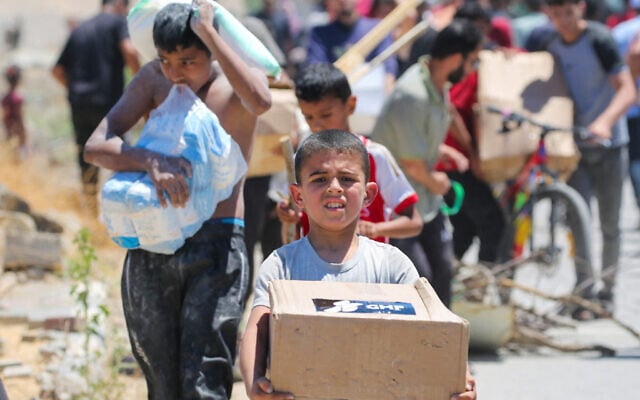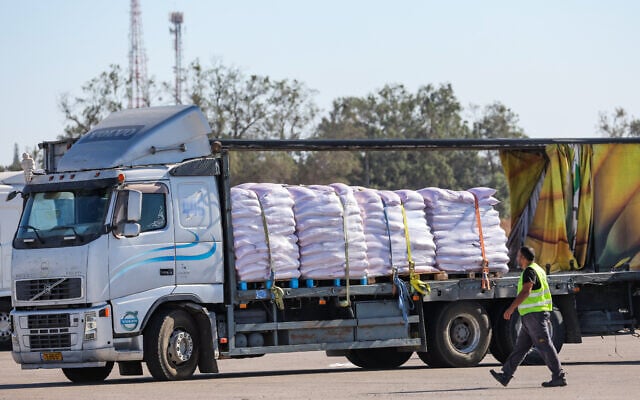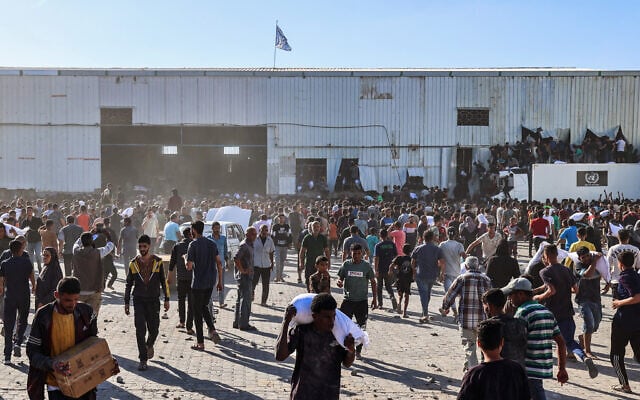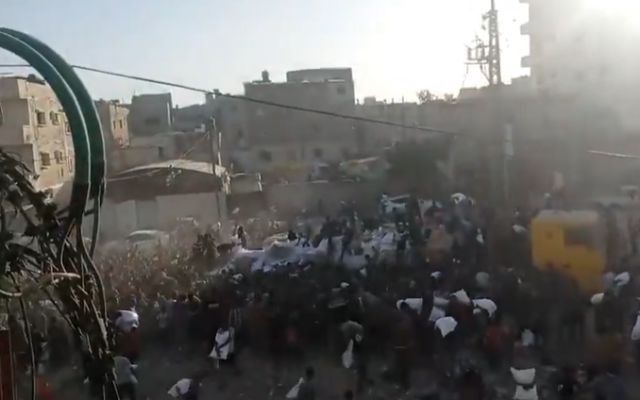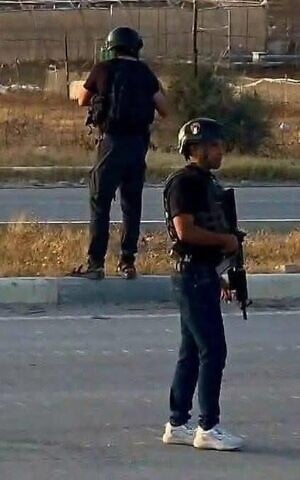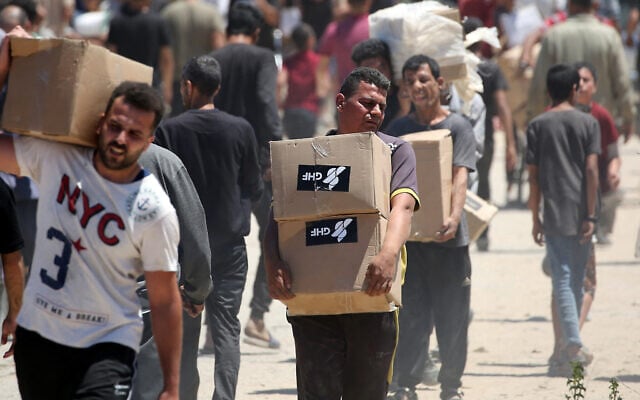


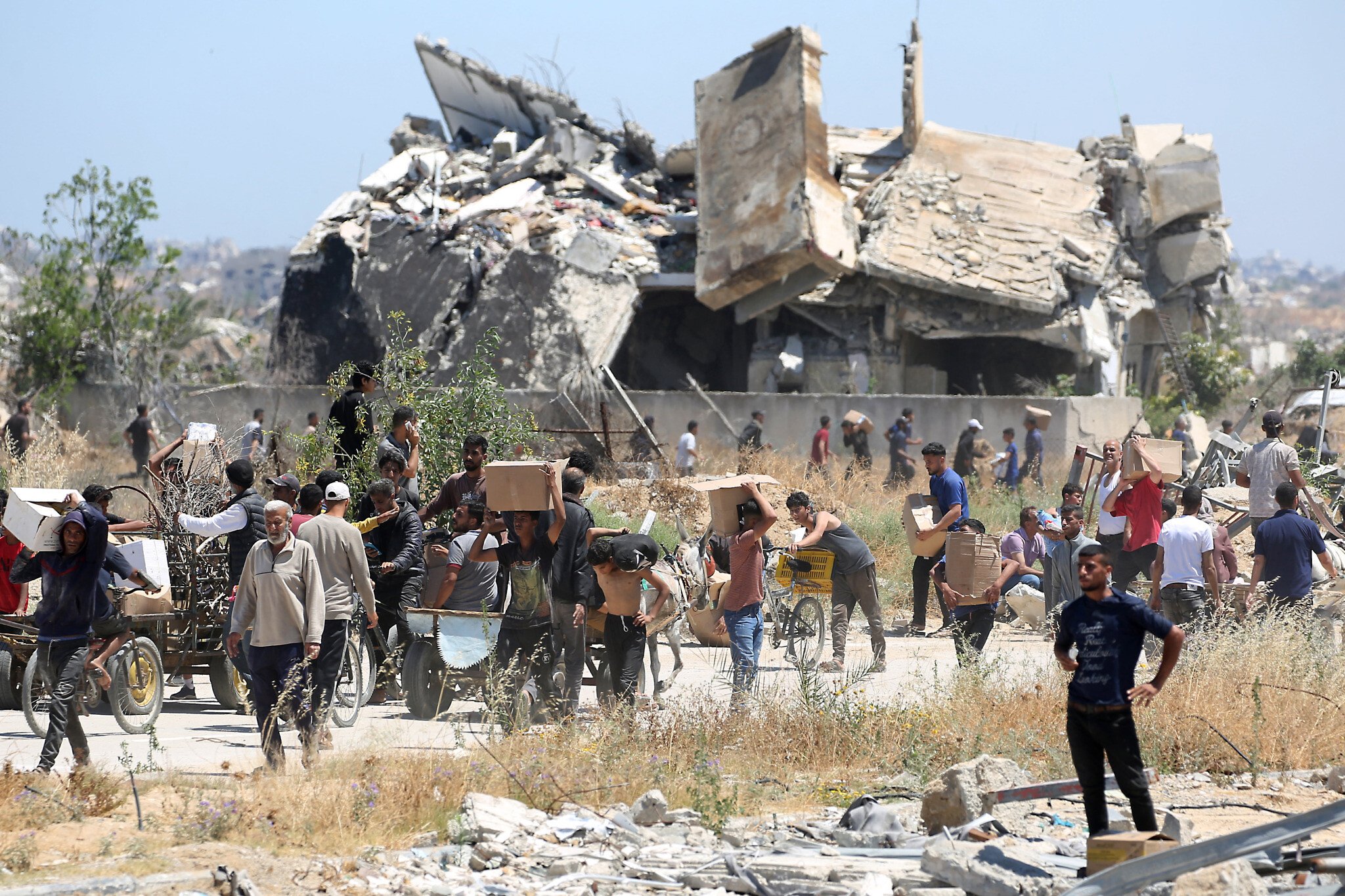
Hundreds of trucks of food and other assistance have entered the Strip since Jerusalem began allowing aid into the Strip last month following an 11-week hiatus, Israeli officials say.
Some of the aid has gone to the US- and Israel-backed Gaza Humanitarian Foundation, a controversial new organization that operates four designated aid distribution centers where boxes of assistance are handed to individuals.
At the same time, assistance has continued to flow via the previous mechanism coordinated by the UN and other humanitarian organizations, which handle logistics and distribution to warehouses and facilities across the Strip. While it enjoys international legitimacy, Israel says the method leaves the aid supplies vulnerable to being taken by the Hamas terror group, against which it is waging war.
After a blockade from March 2 to May 19, footage now shows humanitarian warehouses being restocked and aid being distributed. But the past two weeks have also seen a sharp rise in reports of looting, both spontaneous and organized, as well as violent confrontations involving both Hamas operatives and Israeli forces near aid sites.
While Hamas and others have accused Israel of shooting and killing Palestinians seeking aid, some have fingered Hamas and local gangs in Gaza as responsible for violence surrounding the aid.
According to Michael Milshtein, who heads the Palestinian Studies Forum at Tel Aviv University’s Dayan Center, a Hamas unit known as Sahm appears to be taking brutal action against suspected looters.
“Everyone I speak with in Gaza talks about them. They are executing people left and right,” Milshtein told the Times of Israel of Sahm. He said the unit was tasked with “enforcing all order” in Gaza.
A Telegram channel linked to the unit regularly publishes reports and footage of operations against alleged criminals and collaborators. Daily updates show individuals in Gaza being “handled” by Hamas mechanisms, meaning beaten or killed, reportedly for involvement in aid theft.
On Tuesday, the channel reported that Sahm had executed seven Gazans accused of theft and collaboration with Israel.
Despite over a year and a half of war, with thousands of its fighters estimated to have been killed, Milshtein said Hamas remains “the one dominant actor in Gaza that continues to enforce order.”
“It is battered, it is limited, a pale shadow of what it was on October 7, 2023 — but let’s not be mistaken, it hasn’t disappeared or vanished, not even from people’s hearts,” he said. “I don’t see the classic Middle Eastern signs of a regime collapse. There is no mass surrender of Hamas, no white flags, no Hamas members being hunted down in the streets. There are protests, there are gangs, but every time I check, I don’t see indications that something fundamentally different is about to happen.”
Numerous incidents of large-scale looting have been documented across the Strip since the renewal of humanitarian aid deliveries to Gaza. In some cases, looters appear to be desperate Gazan individuals, though Gaza-based social media has also documented organized raids throughout the war, often carried out by gangs, some with criminal records.
On May 25, dozens of Gazans were filmed approaching a truck carrying humanitarian aid in central Gaza City. Gunfire was heard, and the crowd dispersed, though it remains unclear whether looting ultimately took place.
The shots are believed to have been fired by Hamas or another local security force; the IDF does not protect aid convoys inside Gaza, only maintaining a presence near the designated distribution zones managed by GHF.
Days later, footage from the overnight hours between May 27 and May 28 showed dozens of Gazans looting a humanitarian aid truck that had arrived in the market area of Nuseirat in central Gaza. Reports indicated the truck was initially intended to deliver supplies to the north, where humanitarian organizations were to oversee an orderly distribution.
On May 28, videos circulated on social media showing hundreds of people looting a large warehouse containing what appeared to be humanitarian supplies, including sacks of flour.
Though anti-Hamas media outlets claimed the warehouse belonged to the terror group, portraying it as evidence of popular anger against Gaza’s rulers, the World Food Program — a UN organization — eventually clarified that the footage showed its Deir al-Balah warehouse. It confirmed that two people were killed during the looting, but did not disclose the circumstances of their deaths.
Hamas, which some reports accused of opening fire on the looters, denied firing on civilians.
It remains unclear whether Hamas had any role in the looting or whether it was responsible for securing the looted warehouses.
On June 1, the Israel Defense Forces released drone footage showing armed Gazan operatives firing at people attempting to pick up aid supplies in Khan Younis, accusing Hamas of trying to block aid from reaching Gazans.
“Hamas is a brutal and murderous terrorist organization that is starving Gaza’s population. It is doing everything it can to sabotage successful food distribution in Gaza,” the IDF said.
According to COGAT, the Israeli Defense Ministry unit responsible for coordinating aid into Gaza, over 1,100 truckloads of food, medicine, and medical equipment have entered the Strip through the Kerem Shalom crossing since May 19, including 157 trucks on Tuesday.
However, the UN says it has been unable to pick up most of the trucks destined for humanitarian warehouses it supports due to unsafe roads and access issues, with only 200 truckloads retrieved from the crossing as of May 27.
Jonathan Whittall, who heads the United Nations Office for the Coordination of Humanitarian Affairs in the Palestinian territories, accused Israel of attempting to impede aid deliveries.
“We face challenges in collecting goods from the Kerem Shalom crossing due to insecurity, long delays in receiving the necessary permits, being given inappropriate transport routes, and facing crowd desperation and looting — all a result of restrictions imposed by the Israeli authorities,” he told reporters. “There is no logistical solution to a political decision designed to obstruct aid.”
A UN official told The Times of Israel that it avoids using armed security to guard shipments, instead relying on coordination with local community representatives to reduce looting by Gazans. However, the tactic becomes less effective as desperation rises.
Humanitarian officials have in the past spoken of working with local clan leaders to secure shipments through areas under their nominal control, and reports have indicated that Israel has also mulled similar moves.
While details are murky, some arrangements can apparently involve protection rackets in which armed gangs of looters are paid off with a cut of the aid to keep other looters away.
In recent weeks, reports have proliferated of an armed group known as Abu Shabab, composed of members of a single family, operating near Kerem Shalom in a zone under Israeli military control. Footage published online, including by clan leader Yasser Abu Shabab, show the gang wearing military-style uniforms with the Palestinian flag and the words “Counter-Terrorism Mechanism” emblazoned on them.
“The Abu Shabab story frightens me the most,” said Milshtein. “It’s blatantly clear that Israel is either backing or tolerating this gang, and this reflects the worst patterns of past Israeli behavior in the Arab world – making deals with shady criminals, just like in the 1980s when Israel supported the Christian Phalangists in Lebanon against the [Palestine Liberation Organization].”
“Everyone I speak to in Gaza says the Abu Shabab clan are drug dealers and thieves,” he added. “Before becoming a proxy for Israel, they were looting aid convoys.”
Israel has refused to answer questions about any alleged relationship with Abu Shabab, though the two appear to share an enemy in Hamas.
On May 30, Hamas released an official video showing a group of armed, masked men operating outside a building before being blown up. Hamas claimed the group in the video were working with the IDF to inspect buildings before Israeli troops move in, without specifying whether they were Israeli or Palestinian.
However, online comparisons to previous images of Abu Shabab’s gang suggested it was the same group, indicating that Hamas views the gang as a threat.
According to Milshtein, Hamas had previously killed 20 members of the clan as part of its crackdown on looters.
“Hamas will destroy them, even if it’s difficult,” he said.
Seeking to keep aid out the hands of Hamas, Israel and the US have backed a new aid mechanism in which assistance is distributed to Gazan individuals at sites operated by the Gaza Humanitarian Fund.
The UN and other humanitarian groups have refused to cooperate with the GHF mechanism, saying it does not comply with humanitarian principles by turning aid into a tool of Israel’s military campaign and forcing Gazans to travel long distances through IDF lines to reach the assistance, exposing them to danger.
In recent days, those concerns have been animated by a series of deadly shootings outside a GHF distribution site in Rafah, after the IDF apparently opened fire toward Palestinians who had approached troops after straying off a pre-approved path for reaching a Rafah distribution site.
Hamas health authorities have claimed 61 people were killed and hundreds more wounded in shootings on Sunday, Monday and Tuesday. The figures have not been verified and the IDF has accused the terror group of inflating them.
GHF, which has been beset by controversy, has described the reports of shootings and other violence at aid distribution sites as part of a Hamas propaganda campaign aimed at discrediting the operation, in messaging echoed by Israel and the US.
Nonetheless, GHF shut down its sites for a day on Wednesday to work out measures with the IDF to enhance security and keep future shootings from taking place.
“There are many troubling aspects to this new aid mechanism,” Milshtein said. “Everything is opaque — we don’t know how much is being distributed, or what percentage of the total aid that is.”
Taken together, the looting of aid trucks and issues with GHF highlight the complexities and dangers surrounding aid delivery in war-torn Gaza, as overlapping claims from the IDF, Hamas, humanitarian groups, and international organizations like the UN create a murky picture of responsibility and reality on the ground.
Milshtein argued that Hamas had managed to take advantage of that fog to create a prevailing picture of Gazans having to risk their lives just to receive food, with Israel to blame, regardless of whether it reflects reality.
“Since Sunday, Hamas’s narrative of an ‘aid massacre’ has become the dominant one globally, not just among Palestinians,” he lamented. “The UNRWA commissioner-general even called the aid distribution centers a ‘death trap.’ That ultimately affects the situation on the ground — it impacts Gazans’ motivation to come to the distribution sites.”

